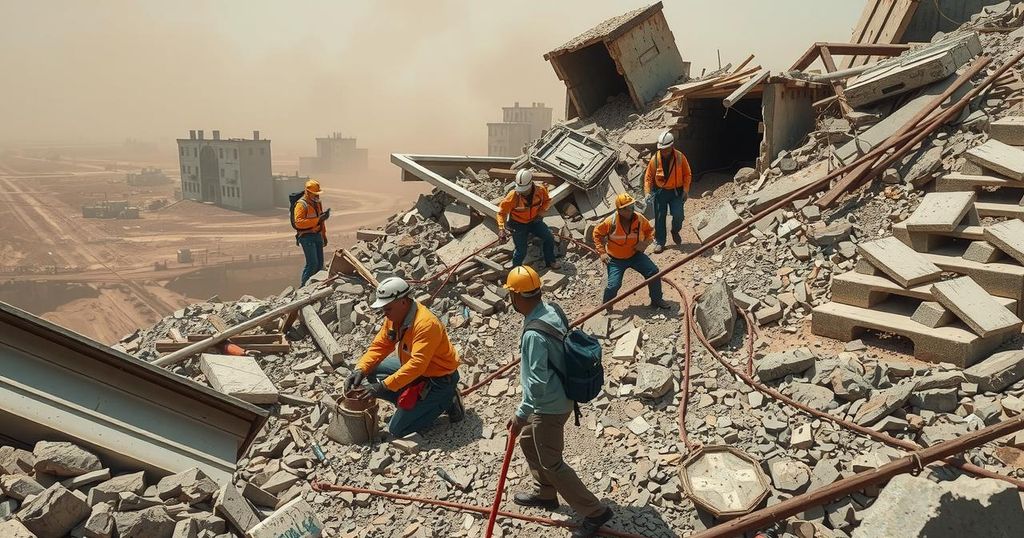Myanmar Earthquake: Rising Death Toll and Ongoing Rescue Efforts

Myanmar’s earthquake death toll may surpass 3,000 as rescues continue. Significant shortages of water and resources are reported, amid a civil crisis displacing millions. International aid efforts face challenges, but notable rescues provide hope amidst despair.
A recent earthquake in Myanmar has led to an alarming increase in the death toll, now expected to surpass 3,000. Amid the devastation, rescue efforts continue, with notable instances of survival, such as a 63-year-old woman rescued from the rubble after being trapped for 91 hours. The ongoing humanitarian crisis is magnified by a civil war that has already displaced millions, making the situation even more dire.
The Myanmar military junta acknowledged the rising casualties and indicated that at least 441 individuals remain missing following the 7.7 magnitude quake. The U.N. has expressed concern about diminishing hopes for finding additional survivors, emphasizing the urgency of the rescue operations. Marcoluigi Corsi from the U.N. remarked that critical rescue time is limited, as essential services like shelter and clean water are critically lacking in affected areas.
Aid organizations, such as UNICEF and the World Health Organization, stress the escalating needs due to water and food shortages, further exacerbated by collapsed infrastructure. Notably, over 10,000 buildings have suffered severe damage in central and northwest Myanmar. Although international rescue teams are on-site, efforts are hindered by logistical challenges, including inadequate heavy equipment.
In Thailand, the earthquake caused significant damage as well, with a construction site in Bangkok collapsing and resulting in casualties. Local authorities are investigating potential structural failures that contributed to the collapse, raising public safety concerns.
Tragic loss is evident with reports of 50 monks killed while taking exams in a monastery that collapsed, with many still unaccounted for. However, alongside grief, there is hope with accounts of miraculous rescues, such as a Chinese team saving multiple individuals from the debris of a collapsed apartment complex.
The aftermath of the quake compounds an already harrowing situation instigated by Myanmar’s civil unrest, with more than 3 million people displaced by ongoing conflict. The National Unity Government, an opposition group, has urged for the facilitation of humanitarian aid and declared a ceasefire among its members to prioritize relief efforts.
While the military has stated a willingness to accept foreign assistance, there is apprehension regarding potential obstructions to aid delivery, reminiscent of past disaster response delays. Advocates emphasize that emergency humanitarian efforts must prioritize saving lives. Tom Andrews, a U.N. rights monitor, highlighted that delivering aid should remain a primary focus amidst the turmoil.
The earthquake in Myanmar has intensified an already critical humanitarian crisis, marking a potential death toll exceeding 3,000 amidst ongoing civil conflict. While rescue efforts showcase remarkable resilience with miraculous survivor stories, significant challenges remain, including shortages of vital resources such as water and medical supplies. The international community’s response is crucial, yet historical patterns of aid obstruction by the military cast a shadow over the efficacy of relief efforts. Swift action is imperative to minimize the devastating effects of this disaster.
Original Source: www.cbsnews.com






